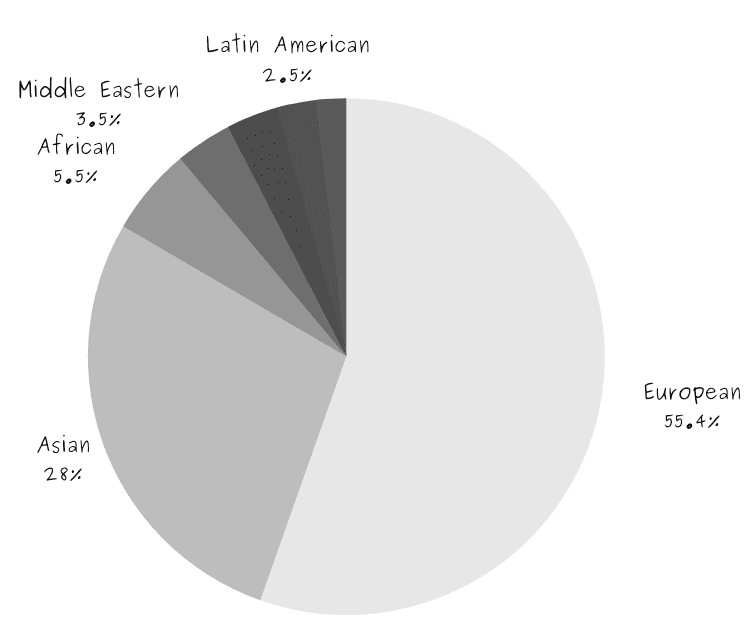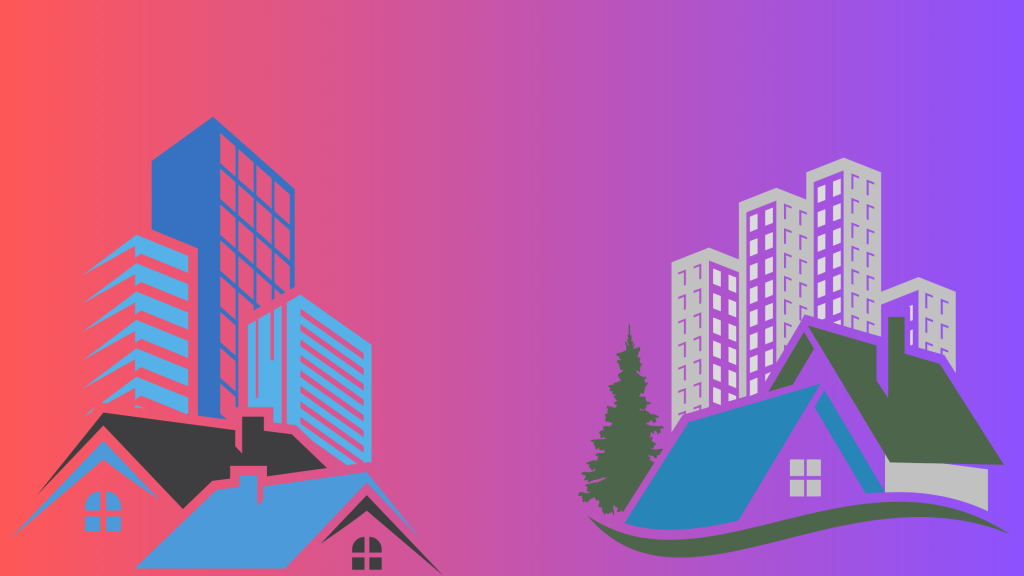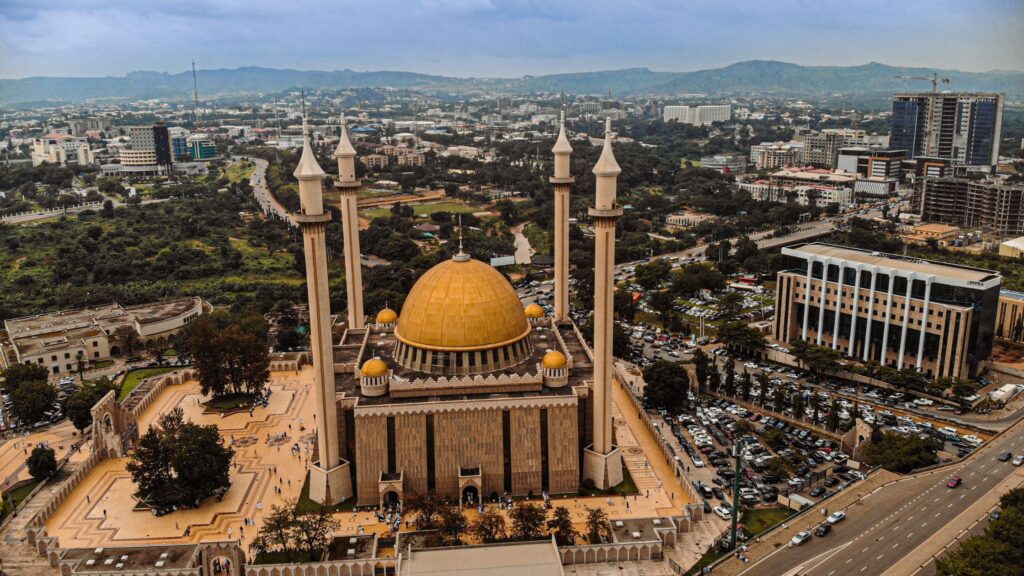Greetings, fellow adventurers! Are you ready for a wild ride through the Great White North? We’re talking about Canada, the land of hockey, poutine, and the friendliest folks you’ll ever meet. And for all our diaspora friends, whether you’re new Immigrants to North America or have been living here for years, this guide is for you!
In case you missed our first article, we explored the top U.S. cities perfect for young multicultural professionals. But now, it’s time to head north and discover the Canadian cities that are just waiting to be explored. Canada is a great place to visit because it has many different cultures, lots of jobs, and friendly people. It’s like drinking a cozy cup of Tim Hortons coffee.
But with so many cities to choose from, making the decision of where to call home can be a bit daunting. We made a guide about the best 3 cities in Canada for people from many different cultures. These cities have nice people and lots of job opportunities. We’ll tell you what makes each city special and why you (not just immigrants) should consider moving here. So, grab a parka, hold on tight, and let’s discover where your next adventure awaits!
How We Determined the Top Canada Cities for Multicultural Professionals and Immigrants
We used the following criteria in compiling this list of the top cities in Canada for immigrants to call home:
- Education, Healthcare Quality and Career Prospects
- Housing Market and Cost of Living
- Racial Diversity
- Social Networking
- Entertainment and Lifestyle
The cities are ranked based on analysis from the Canadian e-Visa Immigration Service. While these cities aren’t all golden, we will focus mainly on their strengths; only discussing cons if they significantly impact livability in the city. Without further ado, let’s check out our list in detail!
1. CALGARY, ALBERTA
Besides being the largest city in the province of Alberta and the third-largest in Canada, Calgary has a very diverse and thriving economy. But perhaps the most significant allure is that Calgary isn’t planning to slow down despite its success. There are objectives to expand its sectors, from agriculture to traditional energy, to transportation, and develop a lot more in life sciences and health, tourism, financial services, and creative sectors. If being close to Mother Nature is a perk for you, you’ll enjoy living in Calgary, from its ski resorts to the sprawling expanse of the Rocky Mountains.
What’s more, unlike other Canadian cities, you don’t have to battle with the extreme cold in Calgary, with winter temperatures ranging from -30°C to +10°C.
Education, Healthcare, and Career Prospects
Calgary boasts the highest level of educational achievement in Canada, second only to Toronto. With over 125,000 students enrolled in 245 schools from kindergarten to high school, the Calgary Board of Education ensures that students of all ages receive quality learning.
Healthcare coverage applies to every resident of Alberta, even with working visas. So long as you can provide a means of identification, work permits, and proof of residence, healthcare is pretty accessible to all. The Alberta Health Care Insurance Plan (AHCIP) is something you should consider, as it could help cut healthcare costs drastically. For context, short doctor appointments without the AHCIP could cost you as much as $100.
Calgary is currently focusing on digitising its significant industries, spending an estimated $7.5 billion between 2021 and 2024 to achieve this. This translates to increased opportunities in aerospace, creative industries, interactive digital media, agribusiness, financial services, energy & environment, life sciences, transportation, logistics, and technology.
Housing Market and Cost of Living
While it is a city associated with wealth and has been said to grow more expensive as the years go by, living Costs in Calgary are lower than in Toronto or Vancouver. Considering it is the hub for petroleum and energy in the country, that’s not a bad thing at all.
To compensate for having a higher cost of living than other locations in Alberta, there are no sales taxes (you only have to pay federal Goods and Services Tax at 5%), and gasoline/ natural gas costs way less. Calgary rents average $1, 497 for a 1 bedroom and $1,854 for two bedrooms as of January 2023.
The buyers’ market is also fair, with average home prices as of January 2023 going for $511,944. An additional note— living in Calgary can be challenging without access to a car, as the city’s public transport system isn’t so comprehensive.
It sounds expensive, but since the average salary in Calgary is $64,600 (18.6% higher than the national average) and the average household income is $129,000, it’s within a reasonable range. In brief, living in Calgary would cost you an estimated $3,173/month if you rent and are single. A family of four would have an estimated monthly cost of $4,908.5 without rent.
Pro Tip: Rentals for Newcomers is a great resource to search for available units and Calgary’s current rental prices.
Racial Diversity, Social Networking, and Fun activities
Calgary has the third-highest proportion of immigrants in Canada urban areas among the country’s urban areas. The city’s racial/ ethnic composition as of 2021 was:

Calgary is a sanctuary for lovers of the outdoors, making it one of the most visited tourist attractions in Canada. Many fun activities include hiking, biking, camping, and skiing. But there’s also something for everyone else, like Drumheller, the town with the world’s best dinosaur fossils, the Royal Tyrrell Museum, and the famous 17th Avenue, where many of the city’s best pubs and restaurants are situated.
It wouldn’t be right to talk about things in Calgary without mentioning the Calgary Stampede, a ten-day-long rodeo, exhibition, and festival.
While it’s obvious Calgary is a family-centric city, it is also one of the best cities for young singles in Canada. From excellent restaurants, great bars, and natural beauty that sweeps you off your feet, especially since the cost of living makes it really comfortable too!
Calgary now, Calgary in the future
Despite a forecasted recession coming to Canada and the world by large, Calgary and the rest of the Alberta province are projected to be unaffected. The province’s GDP was expected to grow by 5% in 2022 and 3% in the next year, thanks to its commodity price-driven growth and the continuous diversification of its economy.
It doesn’t guarantee that there won’t be any hardships in the province, but Calgary is still a great place to move to, thanks to the cost of living and the lifestyle. You don’t have to take our word for it; here’s proof from actor, producer, and director Colin Hanks—
I love Calgary. It’s a great city. I enjoyed my time there quite a bit….
Colin Hanks
2. OTTAWA, ONTARIO
You shouldn’t expect anything less than excellent with Ottawa. After all, it is the capital of Canada.
Ottawa is well-suited for immigrants to settle and boasts an extremely low crime rate, making it one of Canada’s safest places.
French and English are primarily spoken in Ottawa, giving it a sophisticated feel. It also has a diverse economy, much like the other cities on this list, with technology, the public sector, and tourism as major contributors to its growth.
Add Ontario’s Human Capital Priorities stream to the mix (it is one of the easiest provinces to get a permanent residency), the fact that it is the third-cleanest city in the world, and Ottawa might just be a dream come true for immigrants looking for a new home.
Education, Healthcare, and Career Prospects
Ottawa is a government town, meaning a stable economy that isn’t dependent on products, resources, and services. This also means that there are a lot of jobs requiring a vast array of skills. But that’s not all, because as a destination city, Ottawa has a very healthy tourism and hospitality industry, meaning even more jobs. The only drawback with public sector employment is that most require bilingual abilities, so any French you know could be a big boost in increasing employment chances.
Ottawa’s healthcare system is excellent and first-rate, making it one of the best in the world. However, wait times for general practitioners are long and tiring due to the medical staff being understaffed. So long as it’s not a serious emergency, you can skip the wait times and visit a local clinic. The Ontario Health Insurance Plan can also help you access the province’s public healthcare system. Still, it takes three months before coverage begins, so you should file that before you move to Ottawa. It also doesn’t cover prescription drugs, optometry, and dentistry costs.
Public schools in Ottawa are free and bilingual. There are also private schools, which are very affordable, and faith-based institutions, so there are many options to choose from for your kids. There are also options for special-needs education.
Housing Market and Cost of Living
Even though Ottawa is very safe and super clean, the cost of housing is just slightly above average (certainly less than Toronto and Vancouver) and so is the cost of living. Rent can cost anywhere from $1950 for a one-bedroom to $2315 CAD for a two-bedroom. You can still get cheaper housing thanks to the city’s abundant local universities. Ottawa rent usually includes the cost of utilities (waste management, electricity, internet).
If you’re buying a house, average home prices are $479,000. The average monthly salary after tax is $4,324.44, while the estimated monthly costs for a single person amount to $1,316.8, without rent. A family of four would spend an average of $4,749.9 without rent.
You have to account for tipping costs, as it is a standard practice in the city (around 15-20% of your bill), while local sales taxes are charged at 13 per cent (this includes federal and provincial taxes).
Racial Diversity, Social Networking, and Fun activities
About 1,017,449 people live in the capital city, with immigrants making up 25.9% of the total population. The demographic is broken down further:
For recreation, you could go skiing, spend some time in Ottawa’s natural parks, enjoy its many green spaces, or dine at the city’s resident Little Italy and Chinatown areas. Alternatively, the Byward Market and Elgin Street are great locations for pubs, bars, and restaurants. Like Bluesfest, you also have a host of festivals to look forward to year-round.
While Ottawa has many great points, the dating scene isn’t exactly all that. Younger singles may not face the same difficulties as older singles, thanks to the young population, but being a small city, most people are already in committed relationships. You can find dates online and through friends, which is a norm in the city.
Ottawa looking forward
Ottawa’s employment levels have consistently outperformed the average in Ontario since 1999.
On the other hand, its unemployment rate has been relatively comparable to the provincial average, rarely surpassing it.
According to the most recent economic forecasts, the current GDP prediction for Ottawa in 2023 is 3.2%. This figure is expected to remain steady throughout the year. The City Council has focused its following plans on 5 key areas; growth (in a bid to boost housing affordability), mobility (fostering better transportation in the city), urban design (adapting the city to new climate changes and comprehensive designs for streets and communities), resiliency (taking consideration of the environment, healthcare and other policy factors to ensure a better Ottawa) and economy (increasing efforts to give businesses and entrepreneurs the support for success)
3. HALIFAX, NOVA SCOTIA
Still on with capitals, we move to Halifax, the capital of Nova Scotia, another one of the easiest provinces to get a permanent residency in Canada. Halifax is a major port city in the country and boasts one of the best harbours in the world.
Halifax, or City of Trees, offers newcomers a place away from all the hustle and bustle of living a city life. It’s quieter, has surprisingly calmer temperatures (the second warmest city in the country), and has a fantastic seafood scene. What’s not to love about the great small town?
Education, Healthcare, and Career Prospects
Halifax is known as Canada’s Smart City, a nod to the fact that about 63% of the city’s population possess a university degree or trade certificate. With tertiary options like Dalhousie University, Saint Mary’s University, Nova Scotia College of Arts and Design, or Nova Scotia Community College, it’s no surprise.
Halifax is also home to the oldest college in Canada, the University of King’s College, adding pedigree to a comprehensive community college system. Government and military jobs are the city’s largest employers, while the Port of Halifax is a close second. Halifax also has other engaging industries such as Fishing; Mining; Forestry; Manufacturing, service and tourism; Trade; Education; Health and social assistance services, public administration, education, and professional services
Halifax is also a base for several beer companies, adding to the nature of this city as a hub of physically demanding jobs and highlighting the sluggishness of its job market. Trade, health care and social assistance, professional services, education, and public administration are prominent employers in the area.
Healthcare in Halifax scores highly in skill and the competency of medical staff, but while the quality is something to write home about, the real trouble may lie in the long waiting times due to the shortage of skilled personnel.
Housing Market and Cost of Living
You guessed it; housing in Halifax is nothing compared to what we’ve discussed in areas like Vancouver, Toronto, or Montreal. It is understandably more affordable, but make no mistake, Halifax’s housing market is a hot scene, with some homes costing higher than other small towns and cities in the same Atlantic region.
A one-bedroom in the city centre costs an average of $1,677.06, while units outside the centre cost $1,335. For a three-bedroom apartment, you’d typically pay $2,685.48 in the city centre and $2,066.30 outside of it. Purchasing a home is also an option; you can buy houses for under $500,000.
Pro Tip: The more rural the design of a house is, the cheaper it’ll be!
Estimated monthly costs for a single person amount to $932.9 without rent, while a family of four would spend an average of $3,331.7 without rent. While the cost of living isn’t a backbreaker, the tax rates Haligonians pay are the highest in the country.
Because Halifax isn’t a big-corporation city, the costs for government functions and public works are borne by residents. Harmonised sales tax (HST) is charged at 15%, and since there aren’t any state or local taxes, Halifax uses the provincial tax rates: between 8.79% to 21% on income and a combined federal and provincial tax rate ranging from 23.79% to 54%.
Racial Diversity, Social Networking, and Fun activities
As of 2021, Halifax has a population of 465,703, making it Canada’s second-fastest-growing city. 12.6% of this number, or 50,595, persons were immigrants with the following demography:
Halifax boasts an illustrious park system with plenty of green spaces; for families and single people. You could walk on the Halifax Boardwalk, ride your bike along the Shubie Canal, or jog on the famous Frog Pond Trail. The city is also big on hockey and basketball, with two indigenous teams in each league for sports enthusiasts.
The city has many pubs, bars, and restaurants, all with fine dining and wining, but the most remarkable thing about it is the consistent theme of Celtic history; paying homage to Halifax’s Scottish roots. You will also love its arts and culture scene, filled with festivals and, as we mentioned earlier, its appealing seafood offerings.
Halifax is small, and it has many connected networks so dating shouldn’t be a problem. There are six universities in the city, coupled with an aforementioned eclectic arts & culture scene, and great nightlife– all summing up to make the Nova Scotia capital one of the best scenes for dating.
Halifax of the future
If you’re considering the move to Halifax, then you should be prepared for a simple yet fulfilling lifestyle filled with beautiful scenery. But that’s not all this beautiful gem has to offer.
Halifax’s economy is growing and is expected to continue, especially in offshore oil and gas exploration. The Conference Board of Canada (CBC) expects Halifax’s GDP to grow at an average annual rate of 1.6% between 2023 and 2026. The city’s growth and recovery were driven by its success in handling the pandemic excellently. As Alex Morrison puts it, it is a city of significant contributions;
The Halifax area has long played a major role in Canada’s military operations, being the port of departure for convoys, naval task forces, and army units over the past 100 years or so.
Reflecting on the Top Cities in Canada for Immigrants: Our Final Perspective
Well folks, we’ve reached the end of our journey through the best Canadian cities for multicultural professionals. And let’s just say, Canada is one hot tamale when it comes to opportunities and cultural diversity.
Whether you’re a city slicker or a suburbian, there’s a place for you up North. And if you’re still on the hunt for the perfect city, don’t sweat it. Just send us a love letter at [email protected] and we’ll do our best to give you the lowdown on your dream destination.
But here’s the thing, choosing a new home is all about what floats your boat. So, make sure you’re clear on your priorities and goals before taking the plunge. And, with the top cities we’ve highlighted in this article, whether you are immigrants or not, there is something for everyone in your search for a new home.
So, pack your bags, grab your sense of adventure, and let’s head North, my friends!












